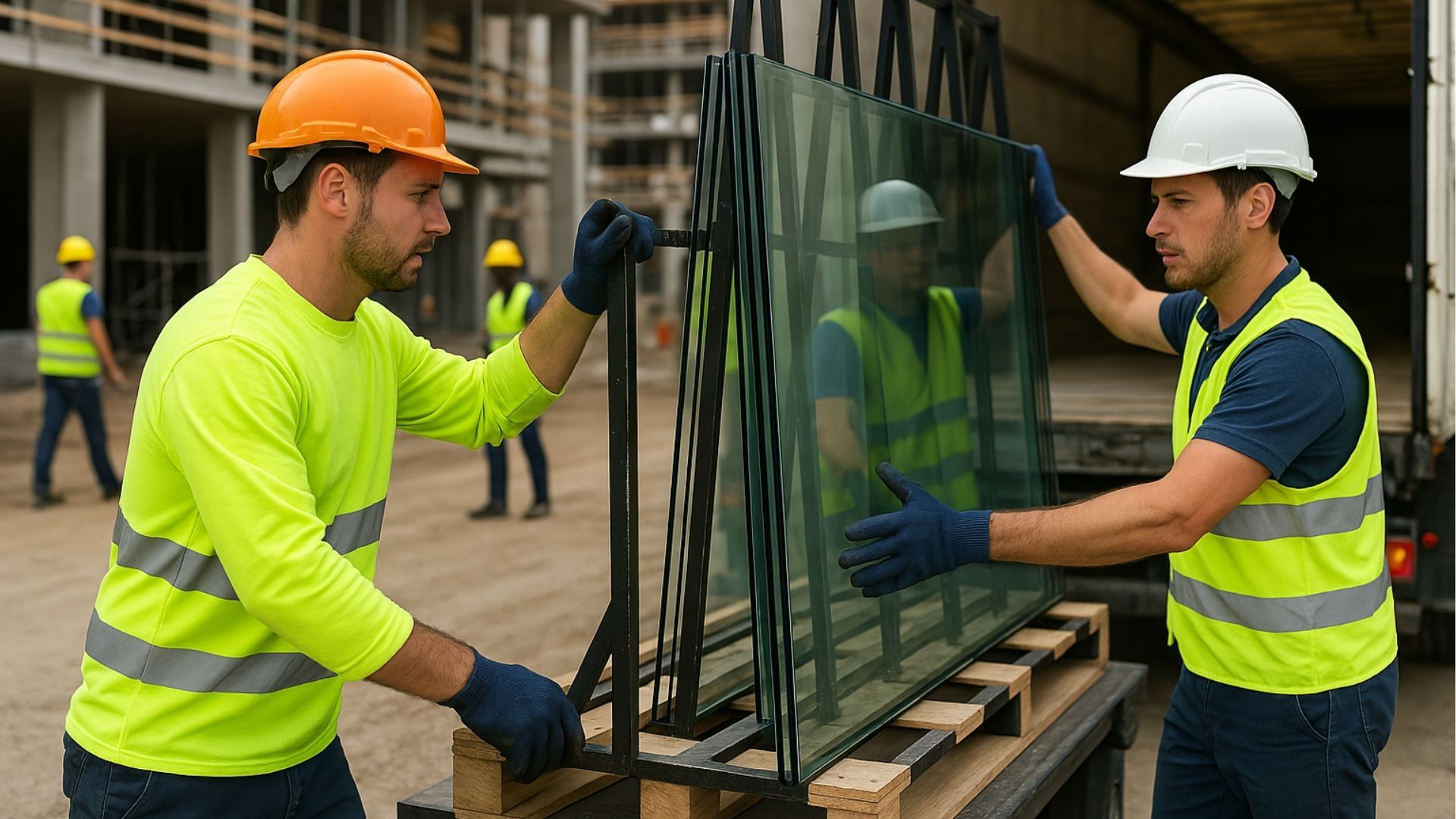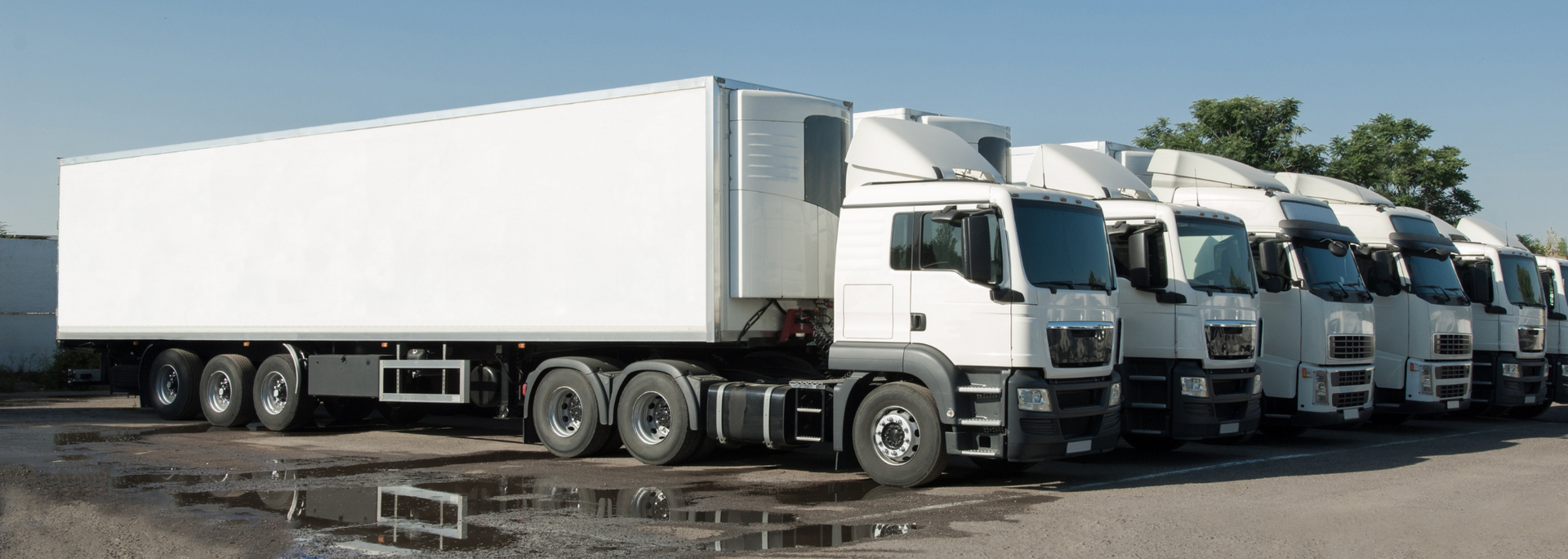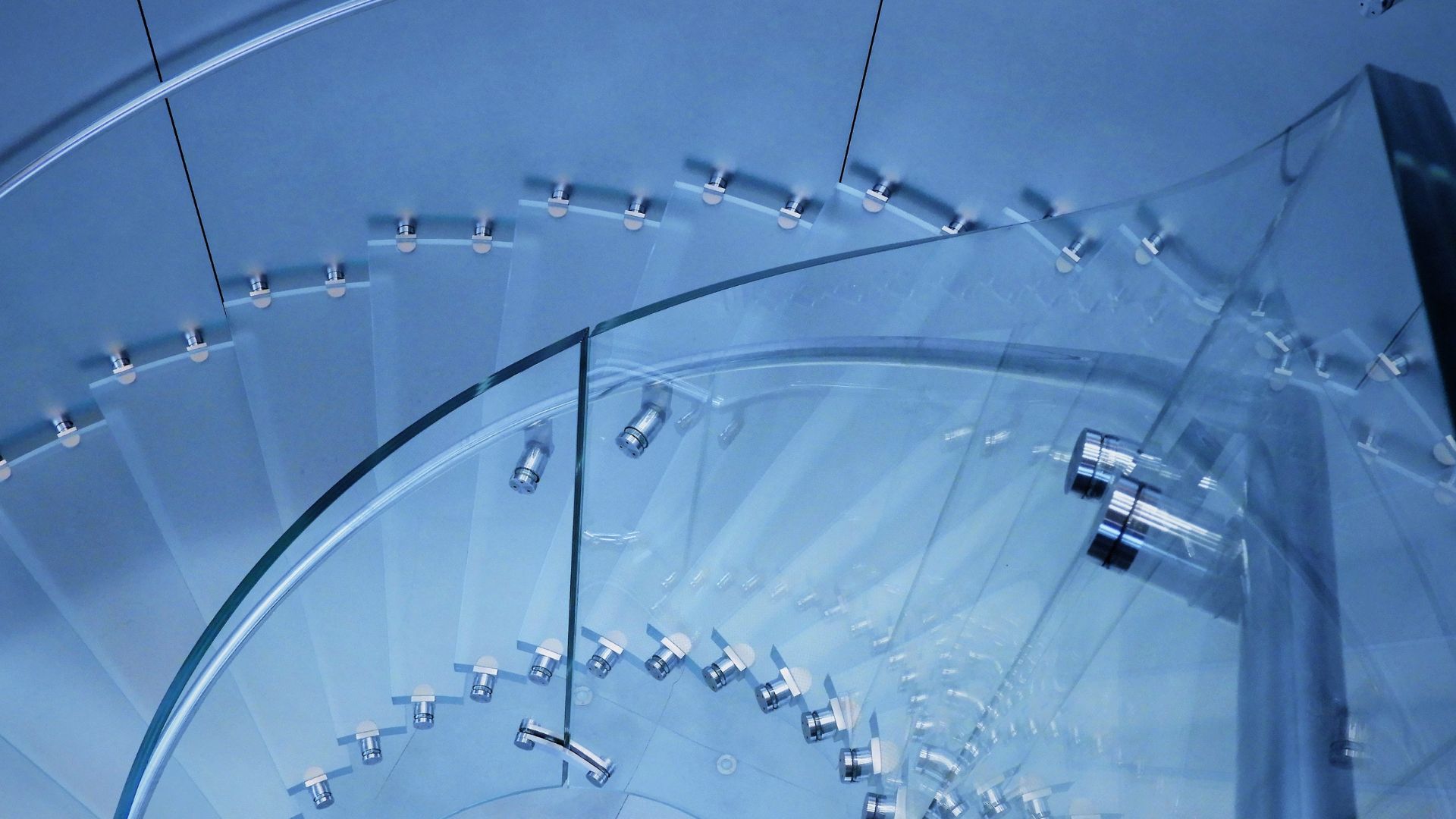A builder's guide to working with glass
Share this blog:
Looking for guidance on working with glass on construction sites? Get the essentials in our guide.

Sind Sie Bauunternehmer oder arbeiten Sie mit Glas? Dann suchen Sie vielleicht nach Anleitungen für die Handhabung und den Transport.
Wie bei allen Aspekten der Bauarbeit steht die Sicherheit an erster Stelle. Glas stellt besondere Sicherheitsherausforderungen dar, die spezielle Verfahren, persönliche Schutzausrüstung und Vorschriften erfordern.
Darüber hinaus werden im Bauwesen viele verschiedene Glasarten verwendet. Diese unterscheiden sich in Haltbarkeit, Sicherheit und Wärmeeffizienz. Sie brechen auch auf unterschiedliche Weise. All diese Faktoren sollten Sie kennen, bevor Sie mit dem Heben, Verladen und Einbauen Ihres Glases beginnen.
Hier ist also ohne weitere Umschweife ein Leitfaden für die Arbeit mit Glas. Wir hoffen, er hilft Ihnen, die Probleme rund um diesen äußerst vielfältigen und vielseitigen Baustoff zu verstehen.
Please note that nothing in this guide should be taken as official health and safety advice. In the UK, you should always refer to the
Health and Safety Executive (HSE) for the latest official guidance.
Types of glass
Auf dem Markt gibt es viele verschiedene Glasarten. Die grundlegendsten sind Floatglas und Temperglas.
Floatglas wird durch das Schwimmenlassen von geschmolzenem Glas über einem Bett aus geschmolzenem Zinn hergestellt. Es ist sowohl als Fenstermaterial als auch als Grundmaterial für andere Glasarten beliebt.
Geglühtes Glas hingegen ist eine Art Floatglas, das geglüht wurde. Das bedeutet, dass das Glas nach der Entnahme aus dem Ofen auf einer Seite mit kalter Luft angeblasen wird.
Beim Zerbrechen zersplittert gehärtetes Glas in große, scharfe Stücke. Daher ist es für bestimmte Installationen ungeeignet – insbesondere an Orten, an denen herabfallendes Glas Passanten verletzen könnte.
In diesen Fällen empfehlen Architekten und Designer in der Regel Sicherheitsglas. Dieses Glas ist robuster und bruchsicherer. Die gängigsten Sicherheitsglasarten sind gehärtetes Glas und Verbundglas.
Toughened glass – sometimes known as
tempered glass – is cooled or "quenched" rapidly. This makes it harder to break than float glass and annealed glass. When it breaks, it shatters into lots of small, relatively harmless pieces.

Laminated glass consists of two or more sheets of glass with a plastic interlayer. At ToughGlaze, we most often use PVB (polyvinyl butyral).
Zum Zerbrechen von Verbundglas ist eine große Kraft erforderlich. Wenn es schließlich nachgibt, bilden sich Risse an der Außenfläche, wobei die strukturelle Stabilität erhalten bleibt.
Then there's
heat-strengthened glass. This is cooled more slowly than toughened glass. It has a similar break pattern to float glass and annealed glass but is up to twice as strong. Despite its strength, however, heat-strengthened glass is not considered a safety glass under building regulations.
Dies sind die wichtigsten Glasarten, die auf Baustellen verwendet werden. Es gibt jedoch noch einige weitere Sorten, denen Sie begegnen können.
Weitere Glasarten für Baustellen
Isolierglaseinheiten (IGUs) bestehen aus zwei oder mehr Glasscheiben, die durch einen Abstandshalter voneinander getrennt sind. Sie werden häufig für Fenster verwendet, bei denen eine höhere Wärmeeffizienz erforderlich ist.
Getöntes Glas ist eine Art farbiges Glas, das Sonnenwärme absorbiert und Blendung reduziert. Dies macht es zu einer energieeffizienten und ästhetisch ansprechenden Option.
Low-E-Glas verfügt über eine spezielle Beschichtung, die die Isolierung verbessert. Dies geschieht, indem die Menge an ultraviolettem und infrarotem Licht, die das Glas durchdringen kann, minimiert wird.
Dies ist keine vollständige Liste aller auf dem Markt erhältlichen Glasarten. Wir hoffen jedoch, dass sie Ihnen hilft, einige der am häufigsten auf Baustellen verwendeten Produkte zu verstehen.
Sicherer Umgang mit Glas
Beim Umgang mit Glas ist die richtige PSA (persönliche Schutzausrüstung) unerlässlich. Ohne sie besteht die Gefahr von Schnitt-, Riss- und sogar Stichwunden.
Nach britischem Recht müssen Arbeiter auf Baustellen Warnkleidung, einen Helm und verstärktes Schuhwerk tragen. Bei der Arbeit mit Glas sollten Sie außerdem dicke Handschuhe und eine Schutzbrille tragen.
Beim Umgang mit Glas können Sie Saugnäpfe und andere Hilfsmittel verwenden, um das Verletzungsrisiko zu minimieren. Glas kann auch manuell getragen werden. Dabei ist es wichtig, das Glas von unten anzuheben und stets aufrecht zu halten.
Glastransport

Wenn Sie Glas zur Baustelle transportieren, müssen Sie bestimmte Sicherheitsmaßnahmen einhalten. Diese beginnen bereits im Lager, wenn das Glas in den Transporter geladen wird.
Verwenden Sie nach Möglichkeit einen Glaswagen. Wenn Sie keinen haben, können Sie das Glas auch manuell anheben. Achten Sie dabei darauf, dass Sie es von unten anheben und aufrecht halten.
Im Transporter muss das Glas fest fixiert werden, damit es sich nicht bewegt. Dies kann durch eine Kombination aus Gurten und Schutzmaterialien wie Polstern, Schaumstoff und Kisten erreicht werden.
Beim Verladen von Glas müssen Sie geeignete persönliche Schutzausrüstung tragen. Dazu gehören Arbeitshandschuhe, Schutzbrille und Arbeitsstiefel.
Dabei geht es nicht nur darum, sich selbst und sein Team vor Verletzungen zu schützen. Es geht auch darum, die Materialien selbst zu schützen. Wenn eine Glasscheibe zerbricht, muss sie ersetzt werden.
So reinigen Sie Glas
Kommt es auf einer Baustelle zu Glasbruch, muss zunächst der Bereich abgesperrt werden. Anschließend muss die Größe der Bruchstücke beurteilt werden.
Wenn Sie mit gehärtetem Glas arbeiten, sind die Fragmente wahrscheinlich groß und gezackt. Diese sollten manuell von jemandem entsorgt werden, der geeignete PSA, einschließlich Arbeitshandschuhen und Schutzbrille, trägt.
Wenn Sie mit gehärtetem Glas arbeiten, sind die Fragmente klein und relativ harmlos. Diese können aufgesaugt werden.
Wie bei allen Aspekten einer Bautätigkeit müssen Sie beim Aufräumen von Glasscherben gründlich vorgehen. Alles andere gefährdet Ihre Mitarbeiter und Besucher der Baustelle.
Regeln und vorschriften
Ganz gleich, an welchem Projekt Sie arbeiten: Beim Umgang mit und Einbau von Glas müssen Sie die örtlichen Bauvorschriften einhalten.
Among other things, these regulations will tell you what types of glass to use in different situations. Some of the key regulations are covered in
Approved Document K. However, you should make sure you're across all relevant regulations – as well as HSE guidelines – before starting work.
Are you looking for high-quality
glass building materials? Here at ToughGlaze, we can cut, process and ship thousands of square metres of glass daily.
Get in touch today for a quick, competitive quote.









